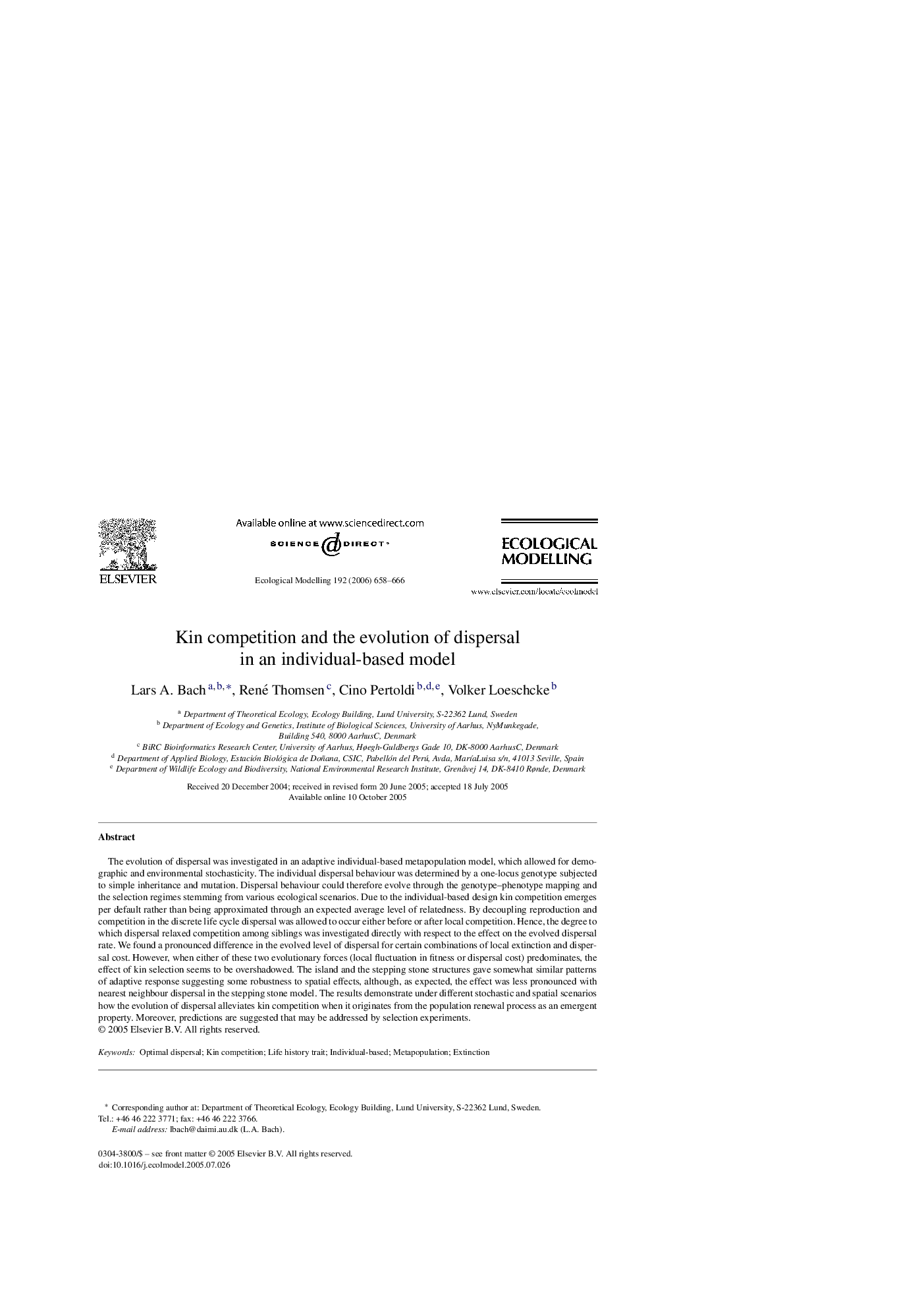| Article ID | Journal | Published Year | Pages | File Type |
|---|---|---|---|---|
| 4379302 | Ecological Modelling | 2006 | 9 Pages |
The evolution of dispersal was investigated in an adaptive individual-based metapopulation model, which allowed for demographic and environmental stochasticity. The individual dispersal behaviour was determined by a one-locus genotype subjected to simple inheritance and mutation. Dispersal behaviour could therefore evolve through the genotype–phenotype mapping and the selection regimes stemming from various ecological scenarios. Due to the individual-based design kin competition emerges per default rather than being approximated through an expected average level of relatedness. By decoupling reproduction and competition in the discrete life cycle dispersal was allowed to occur either before or after local competition. Hence, the degree to which dispersal relaxed competition among siblings was investigated directly with respect to the effect on the evolved dispersal rate. We found a pronounced difference in the evolved level of dispersal for certain combinations of local extinction and dispersal cost. However, when either of these two evolutionary forces (local fluctuation in fitness or dispersal cost) predominates, the effect of kin selection seems to be overshadowed. The island and the stepping stone structures gave somewhat similar patterns of adaptive response suggesting some robustness to spatial effects, although, as expected, the effect was less pronounced with nearest neighbour dispersal in the stepping stone model. The results demonstrate under different stochastic and spatial scenarios how the evolution of dispersal alleviates kin competition when it originates from the population renewal process as an emergent property. Moreover, predictions are suggested that may be addressed by selection experiments.
